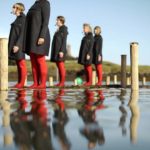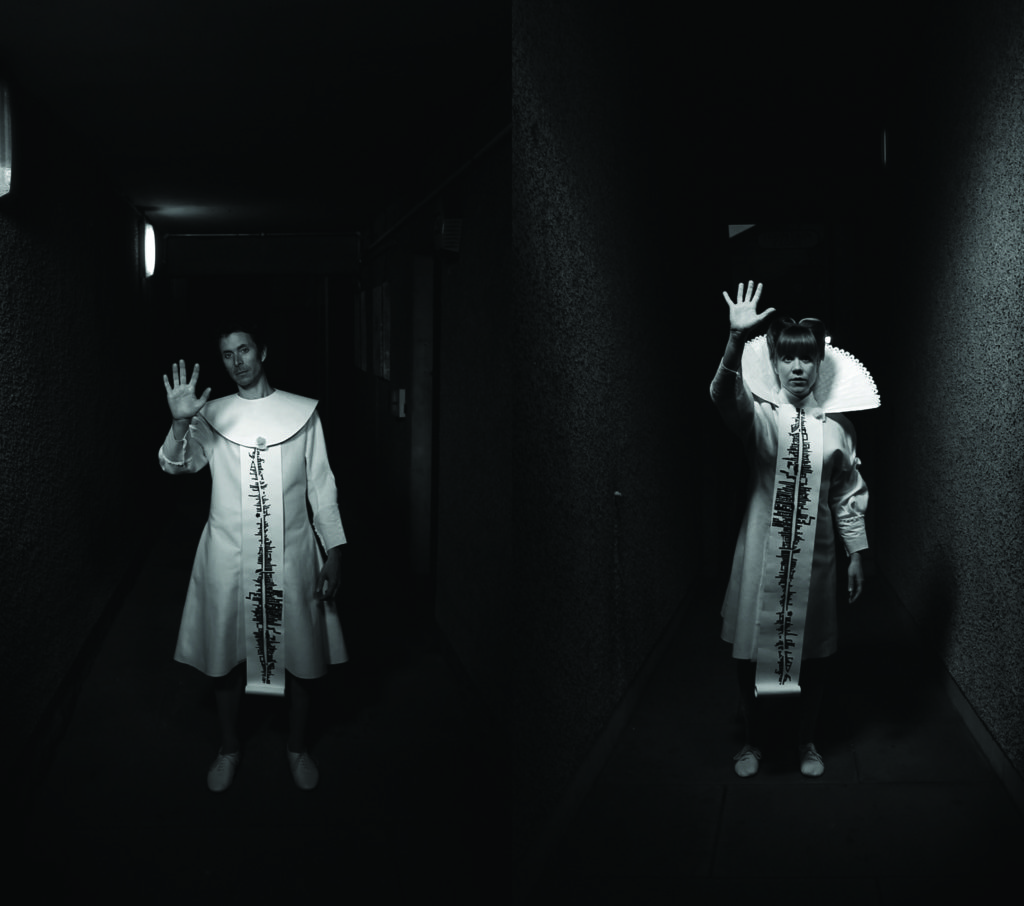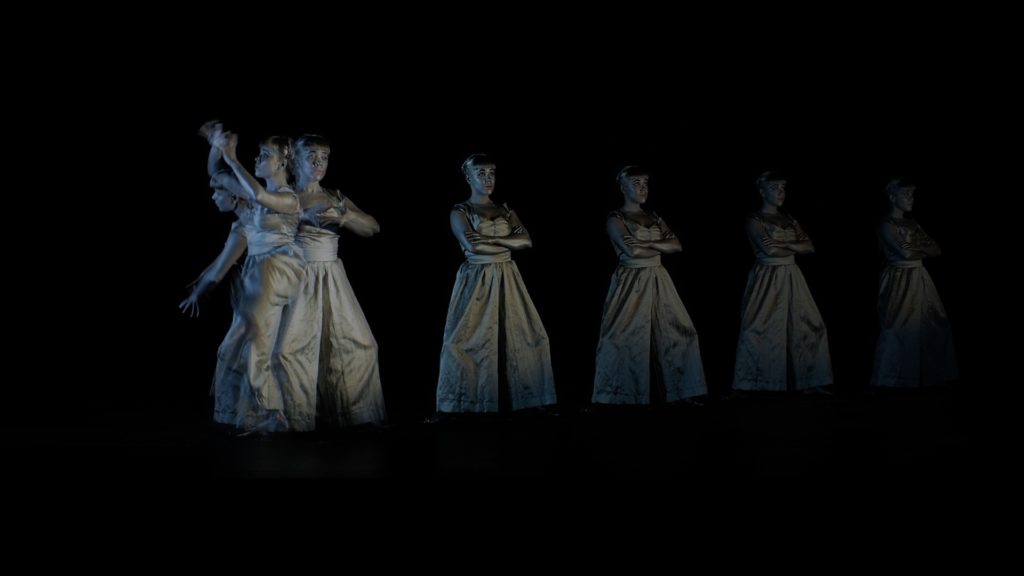
Hanna Tuulikki is a Glasgow based artist, composer and performer. Having joined us as a panellist for a recent screening of Terranova’s film portrait, ‘Donna Haraway: Story Telling for Earthly Survival’, Hanna reflects here on Haraway’s thinking on storytelling, and poses a series of questions which resonate with her own creative practice.
In her 2016 book, Staying with the Trouble, Donna Haraway writes:
“It matters which stories tell stories, which concepts think concepts […]
We need stories (and theories) that are…big enough to gather up the complexities and keep the edges open…for surprising new and old connections“.
I have been reflecting on this: that our ways of relating, knowing, thinking, worlding and telling stories are through and with other stories, worlds, knowledges and ideas; that all cultural practices across the science-art spectrum are themselves forms of storytelling with multiple tentacular threads; and that in today’s climate, for which we have multiple terms or definitions – each one a ‘story’ in itself – we have response-abilities.
The scientific study of lichen tells the multispecies story of symbiosis, of making oddkin across species, teaching us that we are all lichens, in that we are all (either consciously or not) engaged in processes of becoming-with, through multispecies entanglements and assemblages.
Operating outside settled categories, Haraway’s tentacular way of thinking has, over the years, resonated with some questions that I’ve been exploring in processes of art-assembling, performance-making, or musicking – for want of better expressions – processes that are most definitely forms of storytelling. Shaped by my own experiences of researching and making, I thought I would share these questions, in the hope that they will resonate.

How can I work with my sounding body to excavate and activate the layers of stories entangled within a particular place? – of histories and memories, of ecologies and topographies, of traditional or vernacular knowledges contained within poetry, dance and song?
Where do my response-abilities sit within these processes? Who am I listening to and why?
How can I unearth mnemonic topographies of place – the land encoded in the song, the lore embedded in the land – to communicate stories of meetings and enfoldings across past-present-future naturecultures?
Can the process of art-making be one of making kin – with other humans, with other critters?
If I encounter a person, or a group of people, can we improvise with our voices in a musicking process, to form non-verbal connections, transforming one another, becoming-with one another? Can I augment my voice to inhabit my co-singers pitch range, their tone or vocabulary, to find common ground?

Can I extend my voice beyond my human edges into a space where species meet? Can I sing bird? Can I sing water?
As someone born into the cyborg litter, can I work with technology to extend my ears, to slow down the song of a songthrush or a blackbird and glimpse something of what it might feel like to hear as one of these birds? Is this possible?
Can I utilise technology to augment my vocal range into ‘male’ and ‘red deer stag’ pitches? What happens to my way of thinking – my edges – when I reach my ears and my voice into these spaces?

Can I sing with a cuckoo? Can I make oddkin with cuckoo? How can I become-with-cuckoo? What happens to my imagination when a cuckoo flies towards me and begins to sing in close proximity with (or against) me? How can I think-with cuckoo?
What are the various threads of knowledge contained within folk narratives and lore about a particular species? What is, for example, the cuckoo’s relationship to madness, trauma, sexuality, gender, death, loss and grief, to season change and climate change in various naturecultures? How can these entangled knots of knowledges be shared through performance making, with consistent sensitivity to history and place?

What can be learnt from exploring musical traditions of sound mimesis across cultures – that is, for example, the imitation or emulation of other critters within human vocal music?
What can be discovered by working alongside an ornithologist and Gaelic song tradition bearer, within the various fragmented and hidden traditions of the mimesis of birds within Scottish Gaelic song poetry? How can these co-discoveries be woven together into a textural tapestry of sound and gesture that brings to life the complex eco-poetic and mytho-poetic stories of multi-species entanglements within the western isles archipelago?
Can a performance reanimate relationships between bodies of knowledge – stories of ecology, community, gender, work, belief and myth?

What about movement traditions? What forms of tacit knowledge are encoded within embodiments of more-than-human within traditional gesture and dance? What can I discover by learning and doing these dances, as opposed to simply watching them?
What does it mean, for example, to see, feel and become a river in the Kuttiyattam tradition – a form of storytelling through movement in South India? Or, what does the emulation of deer movement or behaviour across cultures reveal about constructions of wilderness as the site for the cultivation of heroic hetero masculinity? And how can these narratives of the body be woven together in such a way that is sensitive to the custodians of these traditions, in queer multispecies entanglements that unearth old and create new connections?

(research image, photo by Lydia Honeybee)
If I practice these forms of sympoesis – of ‘making with’ – in my day to day life, what happens to my understanding of thresholds? What happens to my perception of constructed binaries: of human-and-more-than-human, human-and-machine, male-and-female, ancient-and-contemporary, of self-and-the-world?
And finally, how can I stay with the trouble and contribute to the hot compost pile of ideas, that may, as Haraway writes, “ignite multispecies recuperation and maybe even flourishing on terra”?
About Hanna Tuulikki
http://www.hannatuulikki.org/
Hanna Tuulikki is a Glasgow based artist, composer and performer, working across a range of media and forms, specialising in creating textural tapestries of extended vocal sound for live performances, films and audiovisual installations. Blending musical composition with gestural choreography and iconic costume, she augments the work with innovative visual-scores. In research-led, multi-disciplinary projects, she considers how sound, gesture and language frame our connection with our environment, the more-than-human and one another, re-imagining resonant stories of contemporary relevance. Her award-winning work has been commissioned and presented by organisations across visual, musical and performing arts in the UK, Europe, USA, India and Australia. She is currently Magnetic North’s Artist Attachment recipient, developing a new body of work investigating deer mimesis and encodings of masculinity within traditional dance.

